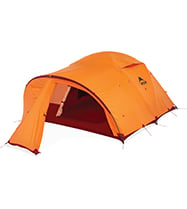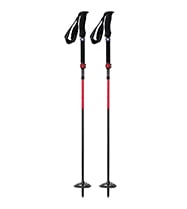Attempting the Seven Summits: An Aconcagua Trip Report
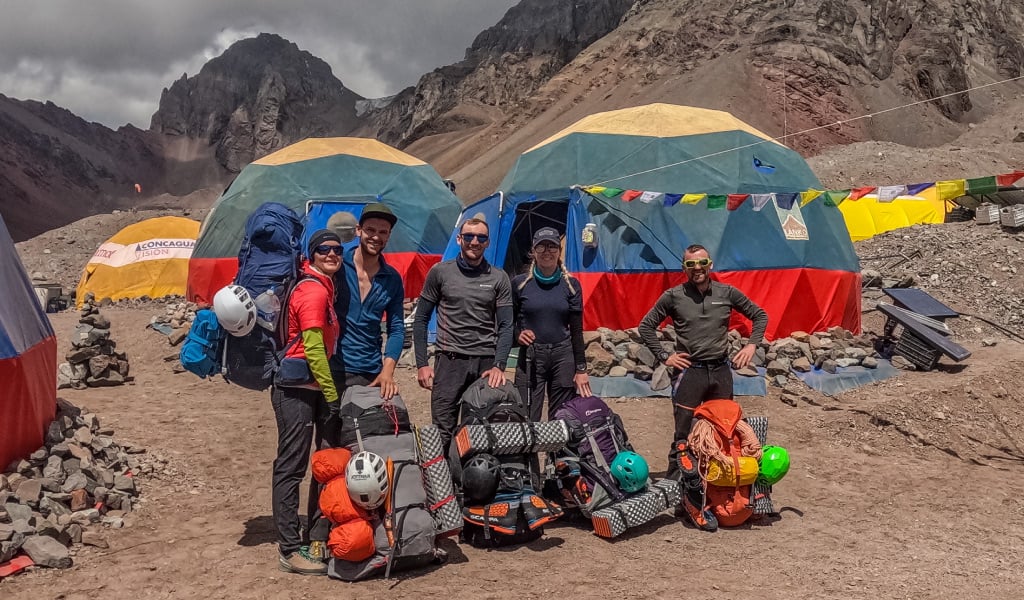
After climbing the six great north faces of the Alps, I was on the lookout for my next big project. The Seven Summits is the collective name for the seven largest mountains, one on each continent—I decided this would be a good goal. More remote and higher altitude but less technical than the six north faces, the Seven would test me in different ways. My wife Ewa and I ticked the African peak Kilimanjaro off the list in 2022 via a lesser-known route. Next on the list for us would be Aconcagua in Argentina, which at 22,838 feet (6,961 meters) would be the highest summit we have attempted so far.
Here is the trip report of our Aconcagua summit attempt.
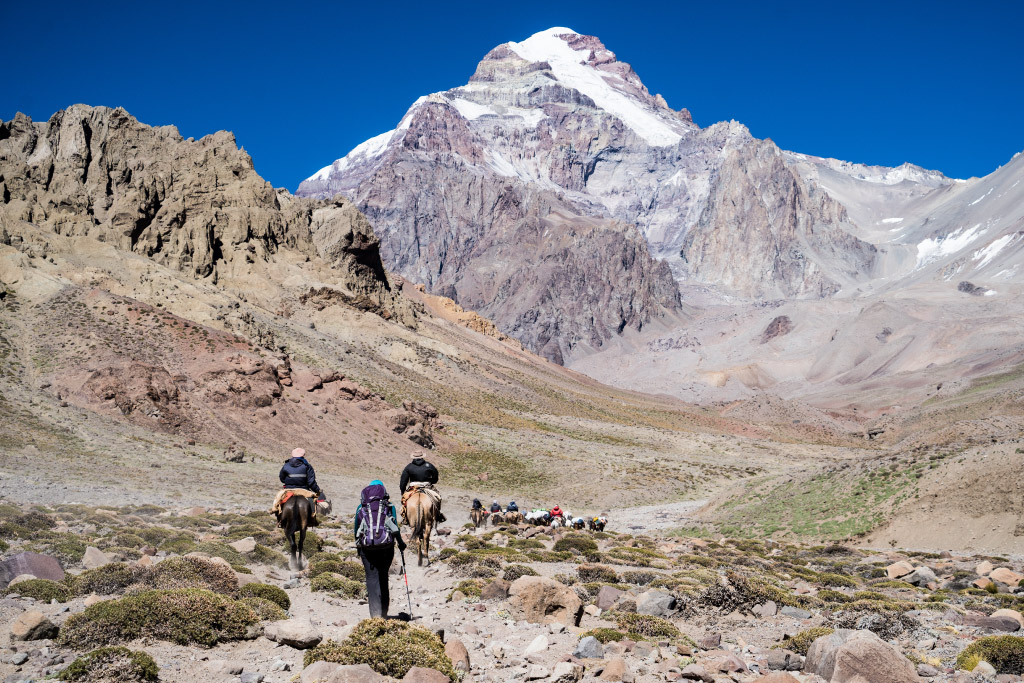
Day 1
The town of Penitentes is a sleepy ski town—it would look abandoned in the summer if it weren’t for the mountaineers starting their ascent from the place. The usual conversations are shared around our last decent meal for a couple of weeks. We talk about the routes and various other mountain ambitions before we finally weigh our packs and load up the mules.
The park entrance is a few-kilometer drive away and we get dropped off at the gate, sign the logbook and start the long walk in. The steep-sided valley and raging river make navigation very simple. Follow the river until you get to the first camp! The pack mules quickly overtake us and will be waiting at the first camp.
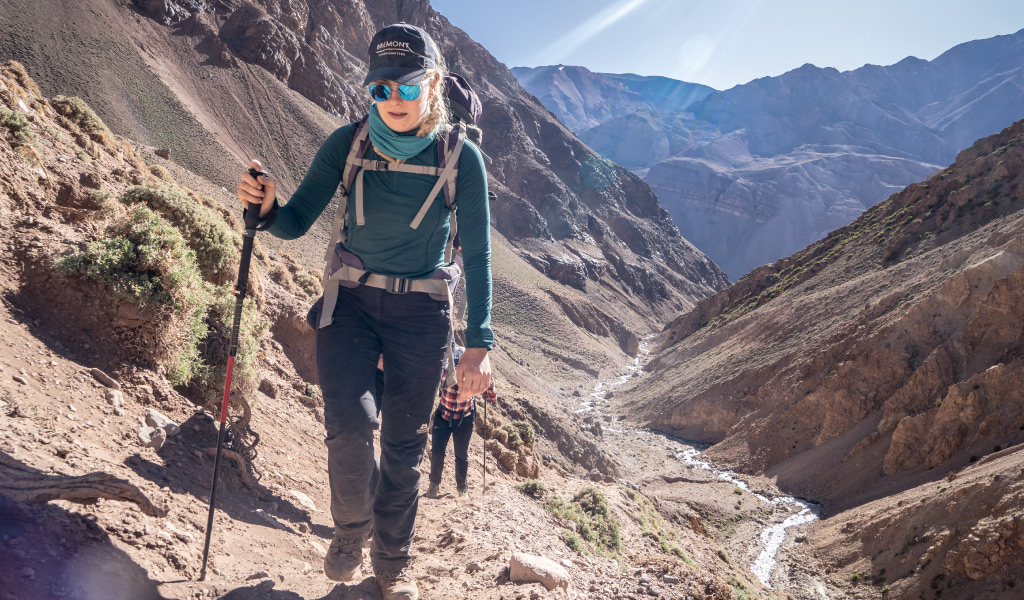
Day 2
We wake up early to reach 2nd camp, get local food and finally see the first view of Aconcagua, plus bonus llamas. The backs of my knees are burnt and Ewa has sunburn on the tops of her hands because she was using trekking poles.
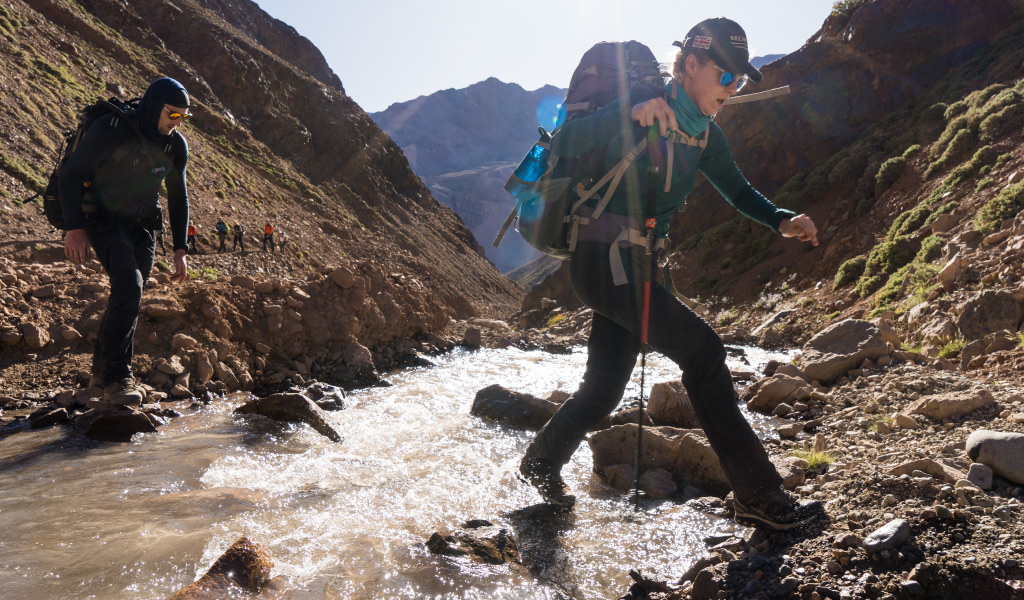
Day 3
We sleep under the stars again and are abruptly woken by the noises of mules getting packed. Our mule rider has a long day ahead of him—he will ride up to basecamp and all the way back to the park entrance in one day, so he’s keen to get going. The rivers are calmest during the early hours since the glaciers that feed them are still frozen, so now is the best time to cross. That still doesn’t stop them from being freezing cold. We are able to jump over a few before they become too wide and we have to wade.
We start to gain altitude, up through a tight gorge to basecamp. The scenery changes from wide-bottomed valleys to narrow ravines and snow-capped peaks all around us, much more of an alpine feel, than the flat river bed a thousand meters below.
A sign lets us know we are at basecamp: “Plaza de Argentina 4200m”. Tents are popping up all over the place and the more corners we turn and hillocks we pass over the more the basecamp opens up, huge geodesic tents, cook tents, helicopter pads, showers and long drops belonging to each different guiding company. We are welcomed with warm hugs by the people of the Lanko guiding company. After finding a post for our tents we head into the big galley tent to tuck into our evening rations.
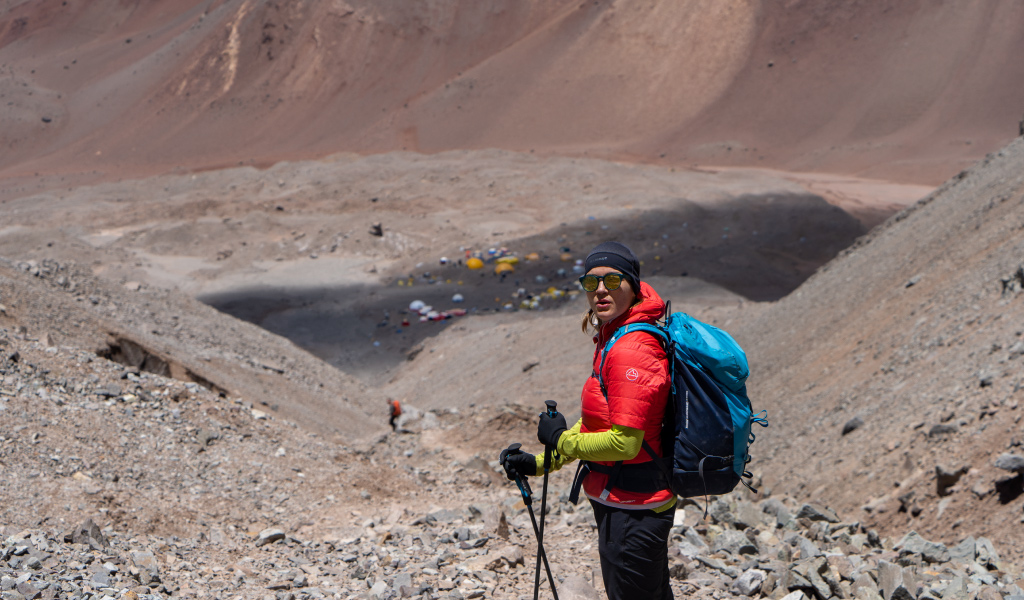
Day 4
We have a rest day before our summit push but for now, we need to make the most of any spare time we have, so we decide to help ourselves acclimatize and push to Camp 1. We do so with very light backpacks—just with some spare clothes, water and snacks. We follow the path through the maze of tracks leading through the dry glacier. We reach the mountain of scree that leads to the plateau on top, where we relax a little before heading back down.
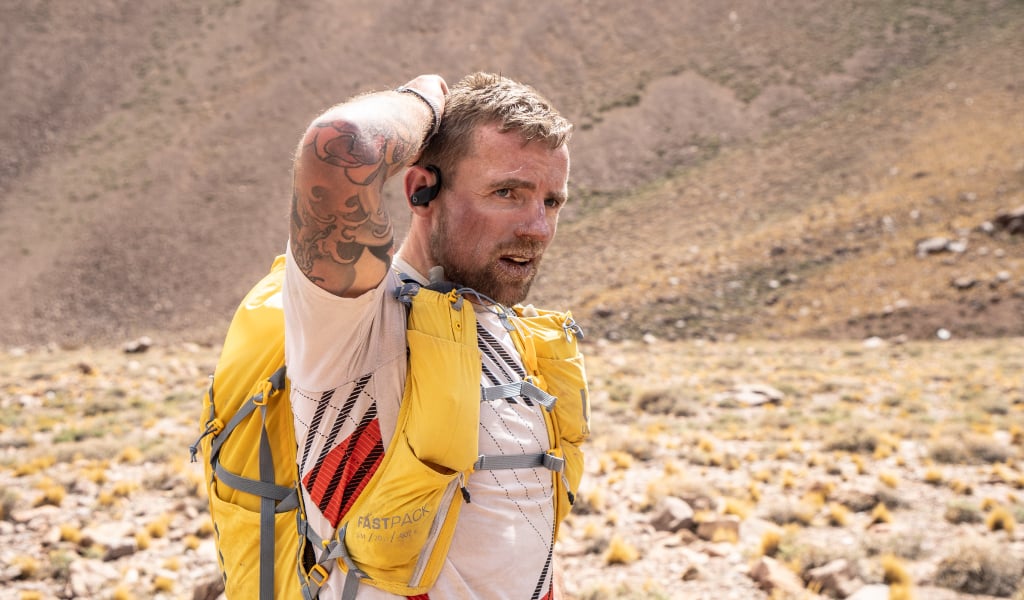
Day 5
Rest day at basecamp. It gives us an opportunity to sort out all our kit and prepare for our upcoming summit push.
That night the Christmas Eve party goes into the early hours of the morning. Sadly, we don’t participate—we need as much energy for the coming days as possible and we go to bed to the beats emanating from the tent 100m away.
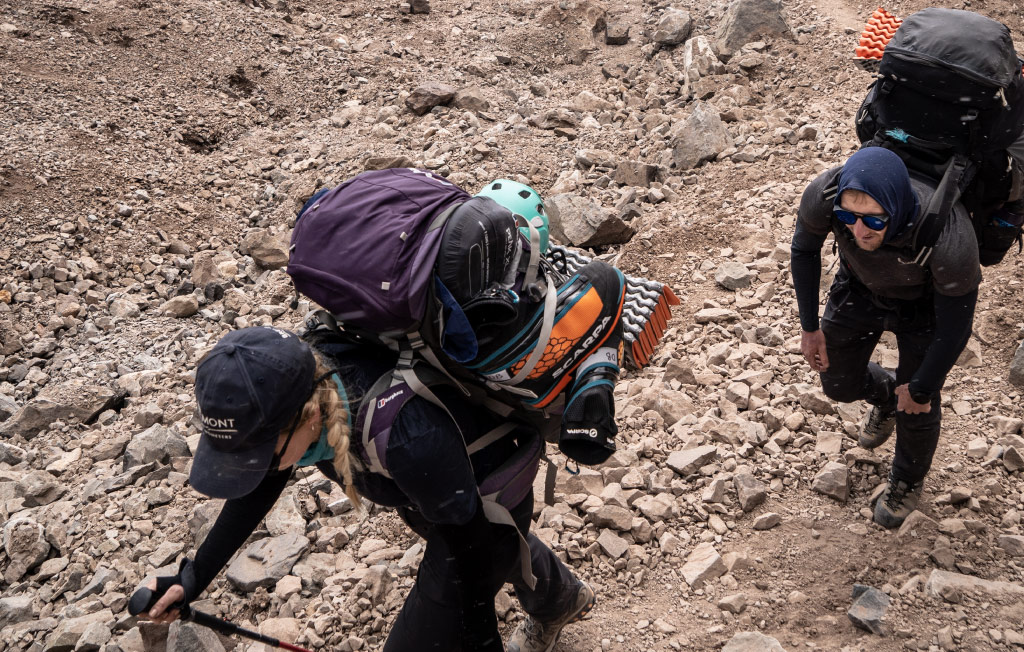
Day 6
We wake up to a white Christmas; a small amount of snow has fallen. Cooka offers us satellite Wi-Fi to message our family and wish them a merry Christmas. We are already familiar with the ascent to Camp 1 but that doesn’t make it any easier, especially with our heavy packs on and the weather coming in.
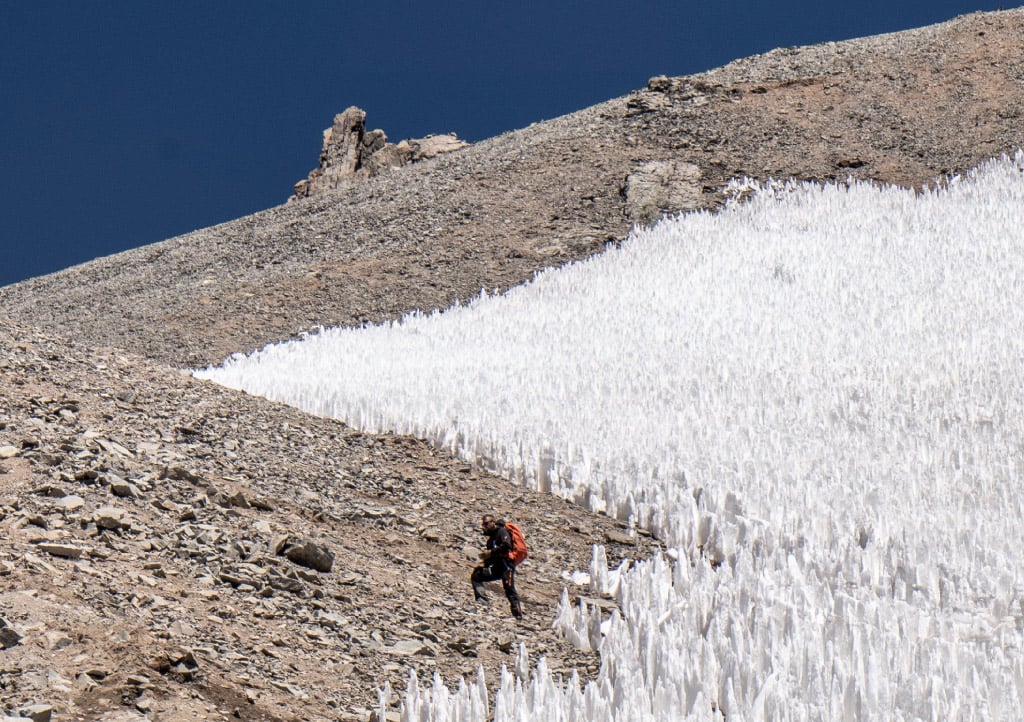
Day 7
It takes us an hour this morning to find running water, the camp is very basic and doesn’t have water storage or running water pipes. A small stream sits next to the camp but is of course frozen in the morning. It takes a while to dig under all the ice and find a stream flowing enough to fill all of our water bottles.
Another mountain of scree reaches a plateau where the two teams branch off. Swifty and Dayna continued the traverse while Jimmy, Ewa and I take a breather before heading up the next scree slope, the snow cover making it even more laborious.
We really begin to feel the effects of the altitude. It is time-consuming going so slowly and the heavy packs and untracked ground don’t help. We find a small rock to shelter behind as we rest for five minutes. At the cliff band, we are unsure where to go and it takes us a few attempts to find an opening to climb through. Various old discarded tins tell us we are back on the right path. Close to the Polish glacier, we find the closest area of flat ground to set our tent up, exhausted. After eight hours on the go, we are finally in our sleeping bags.
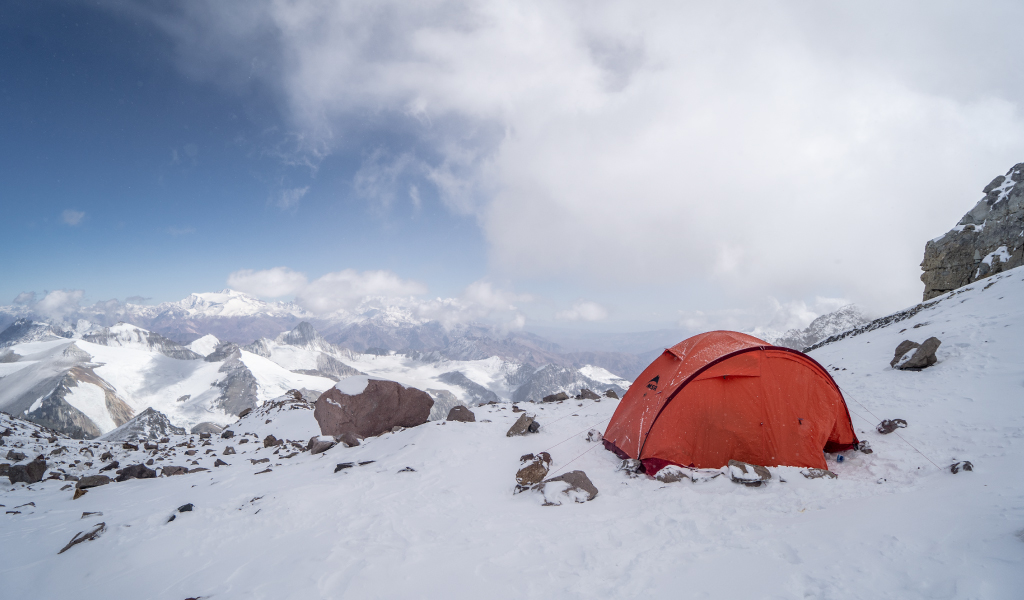
Day 8
It was an uncomfortable night. Broken sleep due to the wind, cramped confines and heavy breathing. There were three of us in a 2-man tent (we chose the smaller tent to save space and weight). Today isn’t going to be the best conditions and we needed a good rest after yesterday’s effort.
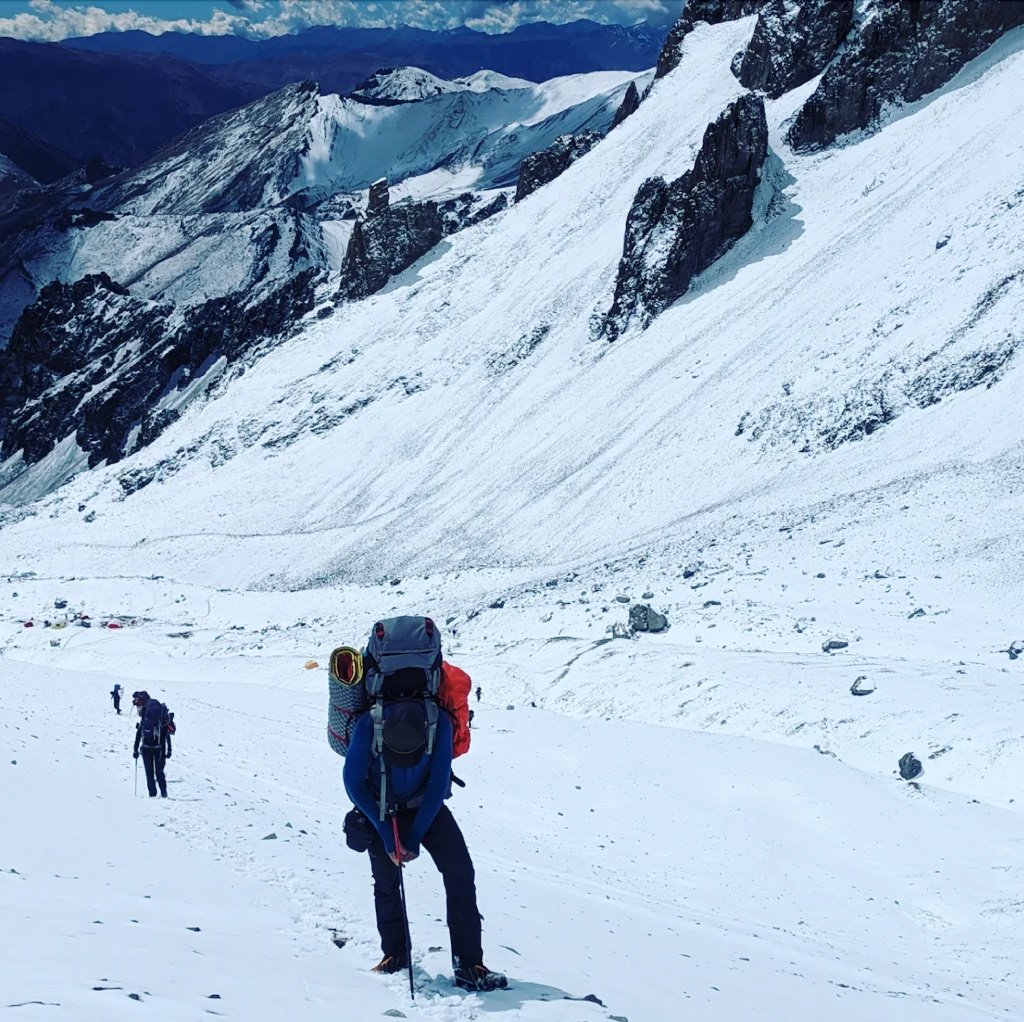
Day 9
The weather gives us a window of opportunity today, so we pack our gear up early and start the traverse over to the normal route. Although we had planned on climbing the Polish glacier, it is heavily crevassed and there has been a lot of snow recently so we opt for the easier route.
A barely visible track traverses across the mountain to the south side and onto the normal route. It isn’t very easy to navigate and again we lose the track through a cliff band which takes us some time to bypass.
We reach a small saddle on the route where we shelter in a wooden structure. Exhausted, tired and feeling defeated, we take some time to look at our options. There is no one else on the mountain today, and we have been breaking trail through the snow all day which is taking a lot of time and effort. We continue to the next col but the strong wind turns us back—we had been protected on the southern face, but moving to the western slopes means we are getting battered by the wind with a windchill of -30˚C.
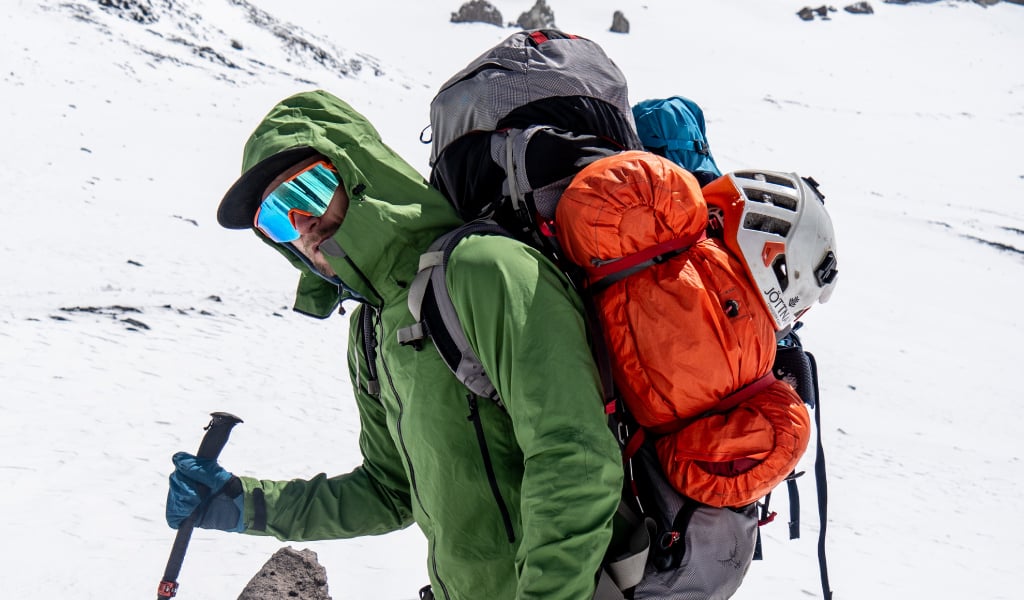
Retracing our tracks back to camp is still not easy, the snow and wind have filled our footprints back in but at least we have gravity on our side, making the downward slog a little less effort.
We collapse into our sleeping bags with barely enough energy to cook our food. It’s very important to maintain calories and energy so we reluctantly leave the tent to fill our snow bag to melt and cook. Strangely we just aren’t hungry and almost have to force our food down.
We contemplate our failure—we don’t have enough food or time for another summit attempt now and will have to start our descent tomorrow morning. We have given it a lot of effort, and you always feel like there is always more you could do. The remains of an old climber who succumbed to the mountain sit 100m away from our camp. It is a reminder that you always need to have some energy in reserve to be able to get off the mountain. Giving the summit your all could mean you don’t get to go home. At the end of the day walking off the mountain without any injuries, or worse, makes it a successful trip.
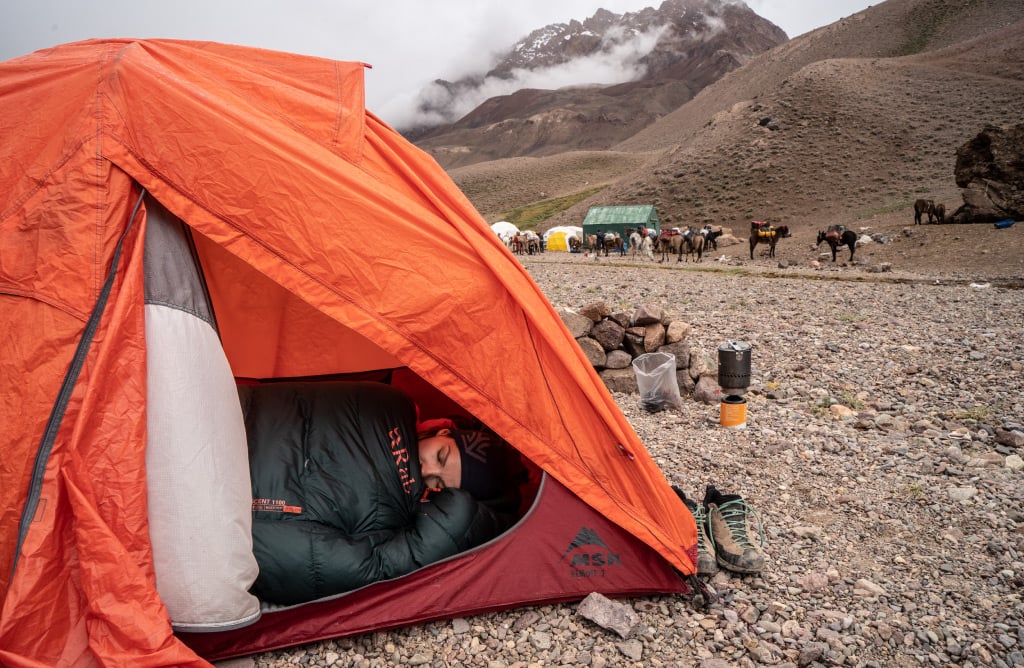
Day 10
We pack up and make our way back down to basecamp. Our weary legs slide down the steep gravel hills and finally pass the snow level onto more solid and dry tracks. At Camp 1 we meet up with Dayna and Swifty who had a similarly hard time on the mountain during their route.
Dayna has been affected by altitude sickness and spent the night being sick which thwarted their attempt—they are happy to be heading down to basecamp for a slightly more comfortable night.
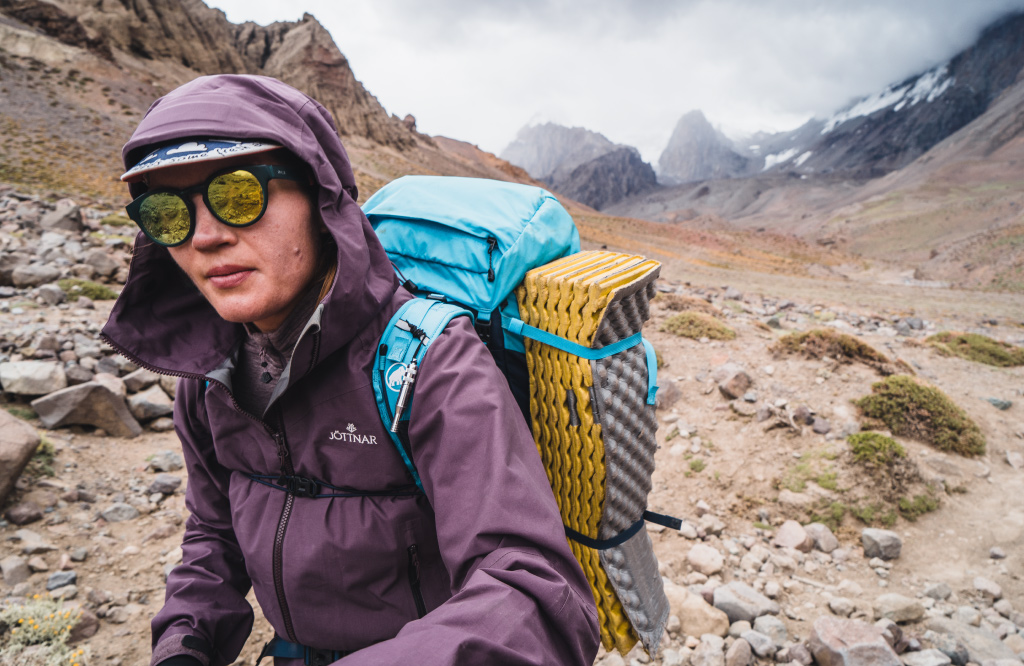
Day 11
We plan the descent over two days, reaching the first camp today and then bypassing the next one all the way to the park entrance the following day.
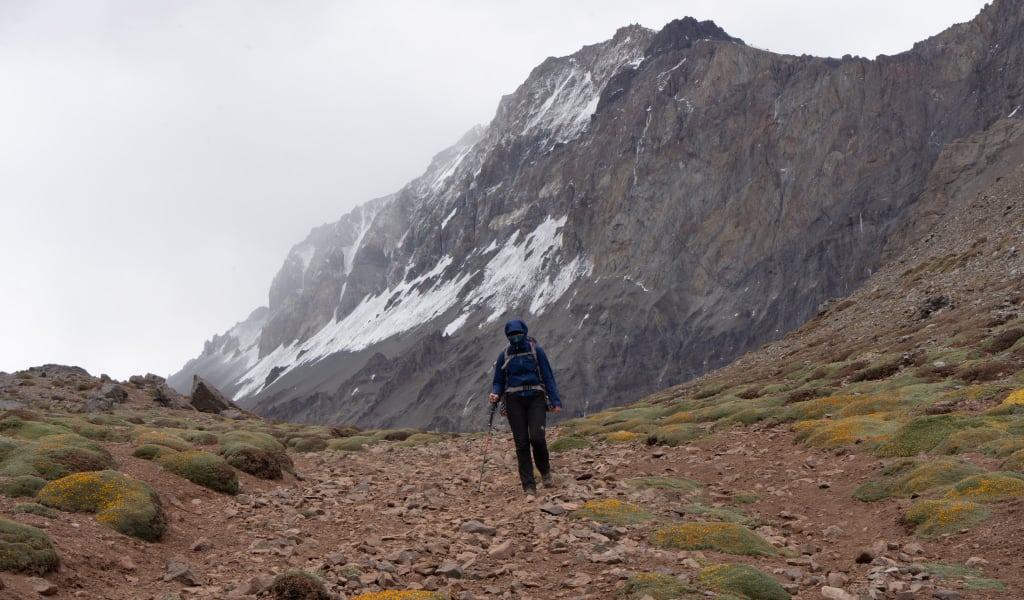
Day 12
The day is spent taking our waterproof jackets on and off between rain showers and sun. After a brief stop for lunch at the camp, the clouds continue to shower us for the rest of the hike back to the park entrance. The rain became heavier, the mud thicker and streams start to appear on the sides of the canyon. I hear a rock gaining momentum as I look around—a table-sized block is rolling toward us from the other side of the river. We run for it as it smashes into the water, soaking Ewa and me, bounces and lands on our side of the bank. We hustle out of the fatal funnel and into safer terrain. The most dangerous part of our expedition is the last 500m to the park entrance.
Although we thoroughly expected to summit, we are not overly disappointed. The mountain will always be there for another day and another attempt. What makes it worth it is the time spent on the mountain, experiencing new situations, views and sharing it all with good friends.
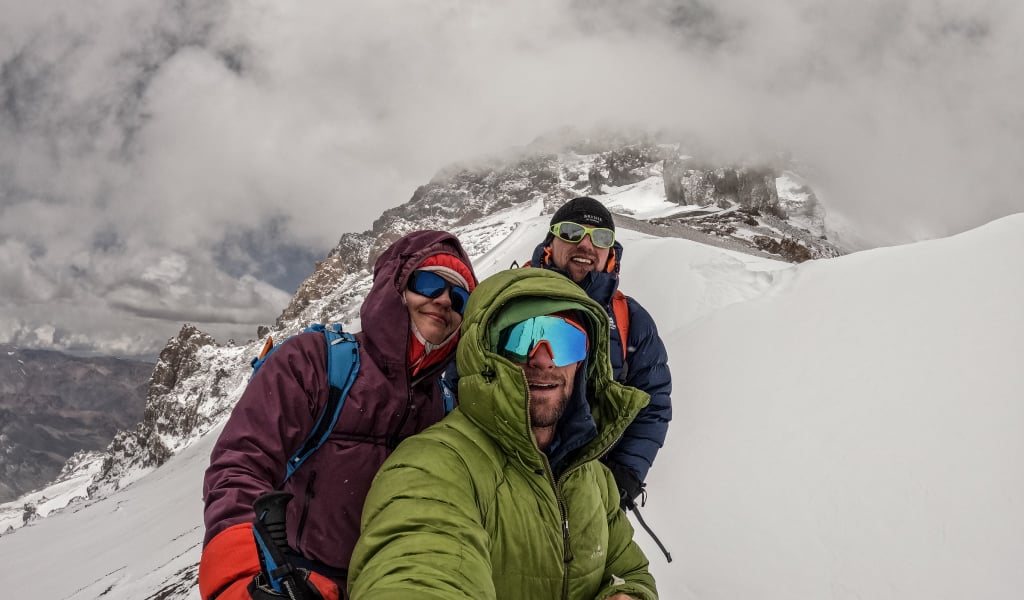
Tips for Climbing Aconcagua:
- Take time to acclimatize, if you feel serious symptoms of altitude sickness descend to a lower camp.
- While acclimating, climb high and sleep low until you feel no symptoms.
- All of the camps until BASE camp have running water and long drop toilets. After that wag bags are very helpful, as all human waste must be taken off the mountain.
- The water from the taps, glacier springs and lakes should be purified. Chlorine tablets are good for this but leave a bad taste; the MSR filters are much better for this job. You can also buy Tang flavored powder from any supermarket in town to cover the taste.
- If you are going without a guide, buy a UHF radio and program the frequency of the rescue helicopter ahead of time.
- Give yourself a cutoff time and know when to turn back. The guiding companies will be more than happy to offer you weather updates so you can plan your ascent window accordingly.
- You can never have too much sunscreen and lip salve: if in doubt put it on! It could be the difference between summiting or not.
Related Posts:
- Trip Report: Climbing in Pakistan’s Karakoram Range
- Exploratory Mountaineering – The Tien Shan Mountains
- Climbing in the Khumbu
 Tim Howell
Tim Howell
Tim spent 7 years as a Royal Marine; becoming a Mountain Leader and cold weather warfare instructor. Since leaving, he pursues his passions in mountaineering and wingsuit BASE jumping, setting challenges in remote corners of the world.

